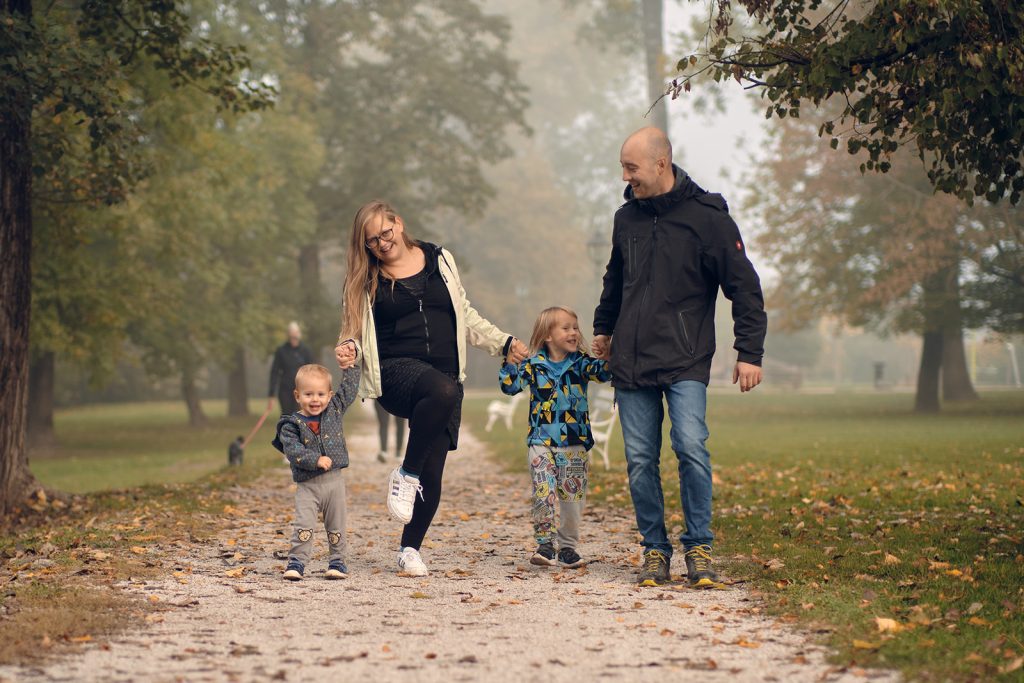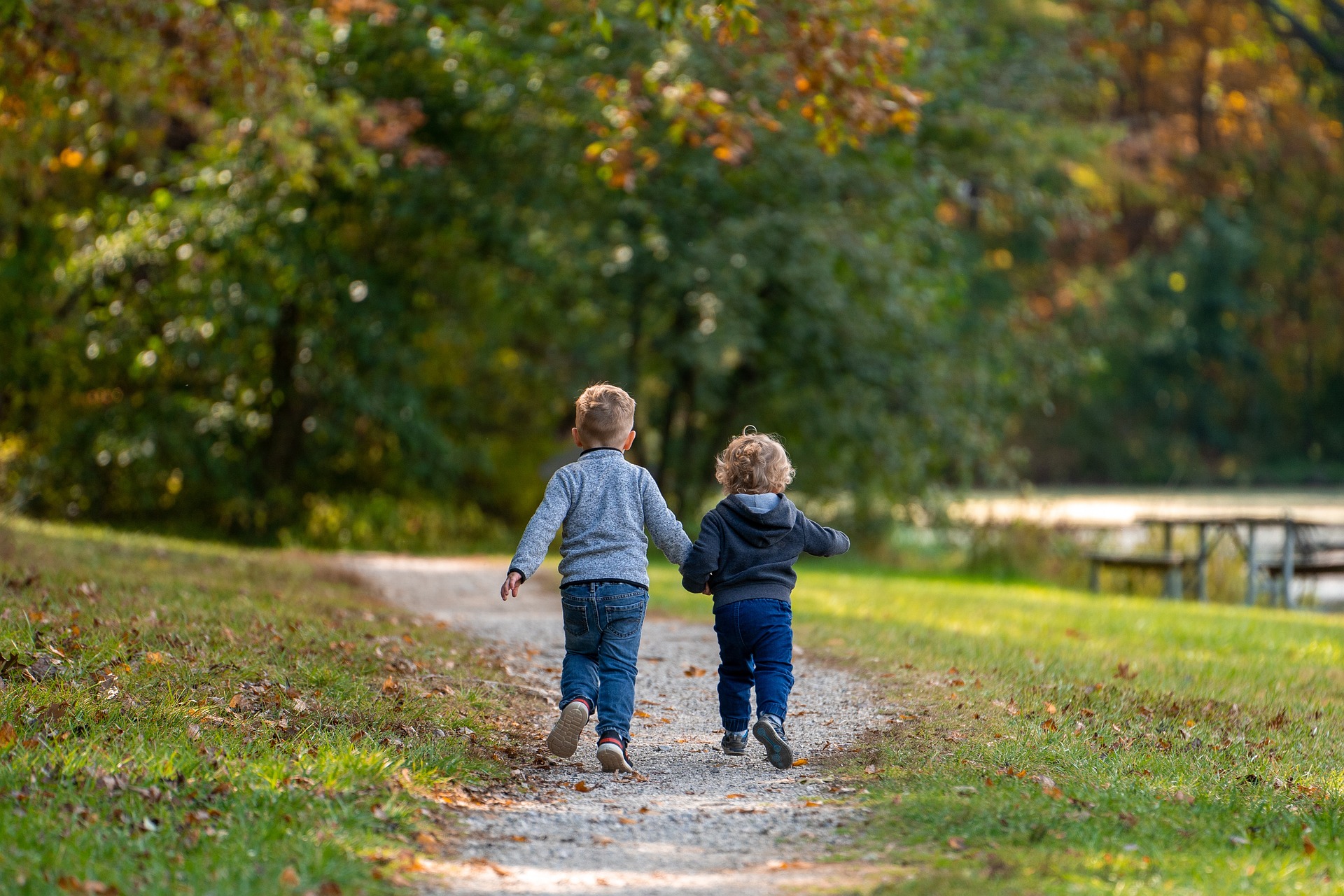How does sufficient movementeffect development of a child, his motor skills, thinking and connection with the environment and peers? Have you ever watched your children play carefree, forgetting about time, engaging their whole bodies, moving in ways that we elders have long since forgotten? As they like to say: “The more I can explore with my body, the more I know, and the more I know, the more I can explore.”
“If you observe a child, it becomes obvious that the development of his mind takes place through his movements.” – Maria Montessori
Movement of children in nature for well-being
The most important thing here is the example we set for our little ones. If we persistently and happily go out into nature together with our children, in any weather and in various situations, our children will also take outdoor movement as something natural, necessary and adventurous for their well-being! So many waters, trees, rocks and vegetation to explore! Not to mention the animals! Nature never runs out of opportunities for observation, learning and, just as important for children: movement. Let them go to sleep satisfied and smiling in the evening.
Movement of children in the arms of the children’s room for the development of motor skills
Sometimes, of course, it happens that the weather is too extreme, the temperatures are too low or too high, or some illness occurs within the family and we are trapped between four walls for several days. That’s when all the accessories, toys, props and other things we have at home for “emergencies” come in handy. Well, even the youngest children spend a lot of time at home for the first few years. That’s why we developed our Pikler’s triangle in two sizes, the Mini Pikler’s triangle and the classic Pikler’s triangle, so that little ones can practice different grips, climbing and grasping right at home. It is truly an accessory worth its weight in gold, which can be used for up to six years and fully adheres to the philosophy of Montessori pedagogy. Remember, movement is also important for mental development progress, as the two are closely intertwined, so children should have the opportunity to move in a variety of ways in all their environments.

Children’s movement through play helps them integrate into the society of their peers
Movement through play and carefree fooling around with peers has been a constant in children’s development throughout history. Not only do children in this way make new friends, get confidants and allies outside the primary family and learn connection and empathy, if they do this through lively play, it is also optimal for their movement development, perception of their surroundings and motor skills. So remember some of the games that are sinking into oblivion and that we played ourselves on the playgrounds in the settlement: rubber twist, earth scraping, ravbars and gendarmes, hunting, hide and seek… Aren’t these the best memories you have of your childhood days? Returning home at dusk, satisfied, dirty and pleasantly tired?

Children’s movement strengthens their self-confidence
Have you ever watched your little one be so proud of himself when he manages to climb the entire playground or make it to the top of the tower, when he climbs to the top of the hill or when he wins a game with his peers? Isn’t that the best thing? Children’s eyes light up and in such moments they build feelings of self-worth, ability and independence! Therefore, it is desirable that children move as much as possible, in all environments, alone or with peers, family, whoever. Children do not want spectacular trips, always new places, extreme sports, it will be enough if you dust off a soccer or basketball ball, rackets or skis. The best things are simple things, those that are always within reach and not necessarily expensive! If you teach your kids this early, they will remember it for life! And that’s probably why it will be much easier for them, they will know how to appreciate even small moments.
Children’s movement improves their work habits
Children learn many things through play, including strategic thinking, which is useful in almost all areas of life. Predicting when and how things will unfold is essential, as well as the activities the child attends. Or just a clearly measured time for free play, which helps the child to set aside time for work, school and obligations in the day, as well as time for himself, for sports, exercise, play, discovering the surroundings, carefreeness. And it is precisely this balance that we pursue throughout our lives. The latter is not just work or just play, it is extremely important that there is enough of both. Let’s show this to the kids early on.
Children should also have time reserved for free play and exploration
That the body and the mind are connected much more than we may have assumed for millennia is becoming crystal clear. Many scientists refer to this phenomenon as embodied cognition: the idea that the mind is not only connected to the body, but that the body influences the mind. It is amazing that Maria Montessori talked about the need for movement and adopted this philosophy 150 years ago. Movement is generally very emphasized in the philosophy of Maria Montessori, who persistently repeated how important it is for children to be as independent as possible when exploring their surroundings. Therefore, let your children move as much as possible, in all circumstances, in all weather!

